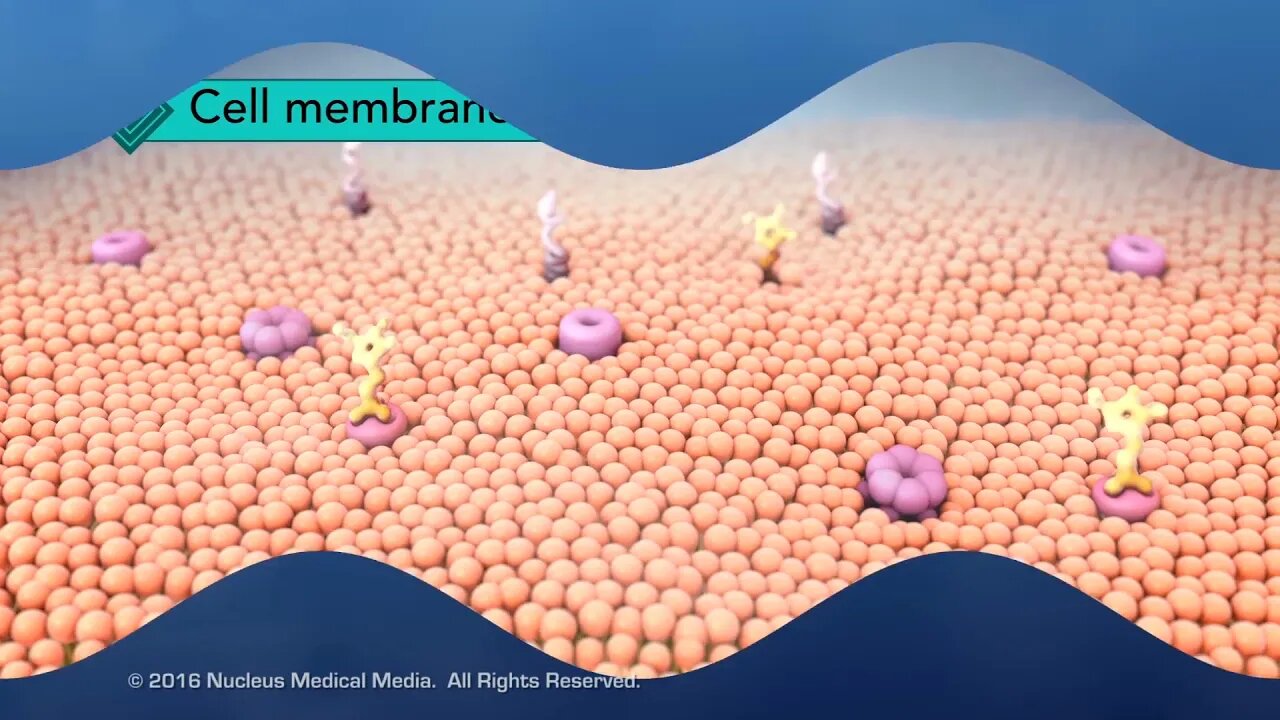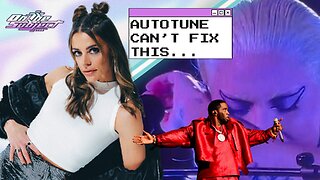Premium Only Content

Structure of the Cell Membrane
For Employees of hospitals, schools, universities and libraries: download up to 8 FREE medical animations from Nucleus by signing up for a free trial at: http://nmal.nucleusmedicalmedia.com/biology_youtube
SCIENCE ANIMATION TRANSCRIPT: In this video, we will be discussing the structure of the cell membrane. When scientists looked at the selectively permeable cell membrane, they described its structure as a fluid mosaic. You might know that a mosaic is a picture made up of little tiles. Like a mosaic, the cell membrane is made up of different parts as well. The cell membrane has two layers of phospholipids referred to as a lipid bilayer. The lipid bilayer isn't rigid. The phospholipids in it have the ability to move in a flexible wave-like motion. Let's take a closer look at a few phospholipids. The round head portions are hydrophilic, which means they're attracted to water. Both the extracellular fluid, meaning fluid outside the cell, and the cytoplasm inside the cell are mostly made up of water. So, the hydrophilic phospholipid heads of the outer layer will be oriented toward the extracellular fluid. And the heads of the inner layer will be oriented toward the cytoplasm. The phospholipid tails are hydrophobic, which means watery areas withheld them. So they orient toward each other in a direction as far away from the watery content as possible. There are also scattered proteins embedded in the phospholipid layers, some with carbohydrates attached. So, in the fluid mosaic model, the cell membrane is made up of different parts. And these parts make up a flexible boundary around the cell. But how do the majority of substances get in our out of the cell? Some molecules sip through the little spaces in between the phospholipids, which make up the majority of the semi-permeable cell membrane. However, other molecules are too big to fit through the cell membrane this way. So, how do these larger molecules pass through the cell membrane? The molecules move through proteins embedded in the cell membrane, either from the extracellular area into the cell, or from the intracellular area out of the cell. These substances will move through tunnels made up of these proteins. We'll explore how things move through the cell membrane in greater detail separately. [music]
NSV15005
-
 2:41:07
2:41:07
TimcastIRL
5 hours agoIndia Launches AIR STRIKES On Pakistan, Nuclear War Feared, Trump Calls For QUICK END | Timcast IRL
282K65 -

Akademiks
3 hours agoDay 2/30. Diddy TRIAL Day 2! Rihanna Pregnant. Ye Walks out of Interview? Drake SOLO ALBUM OTW
36.2K -
 2:24:20
2:24:20
Laura Loomer
4 hours agoEP120: Have The Epstein Files Been Destroyed?
43.3K13 -
 3:14:08
3:14:08
Barry Cunningham
7 hours agoPRESIDENT TRUMP REMARKS AT FIFA MEETING IN WHITE HOUSE | MY INTERVIEW WITH TED NUGENT | MORE NEWS!
68.9K64 -
 19:43
19:43
Producer Michael
10 hours agoLOSING $35,000 ON SLOTS WITH VEGAS MATT
34.2K2 -
 1:28:54
1:28:54
Adam Does Movies
16 hours ago $1.69 earnedTalking Movie News + AMA - LIVE!
39.6K2 -
 2:34:47
2:34:47
SquallRush
17 hours agoDragon Ball Tuesday! + Reverse Nuzlocke with @DTDUBtv
56.2K3 -
 1:45:49
1:45:49
megimu32
5 hours agoON THE SUBJECT: Can I Get a Remix? Diddy, Gaga & Headlines That Sound Fake
50.2K6 -
 19:07
19:07
Stephen Gardner
6 hours ago🚨Steve Bannon Predicts Chaos and a Constitutional Crisis!
62.7K61 -
 1:07:06
1:07:06
Anthony Rogers
10 hours agoEpisode 365
30.9K1